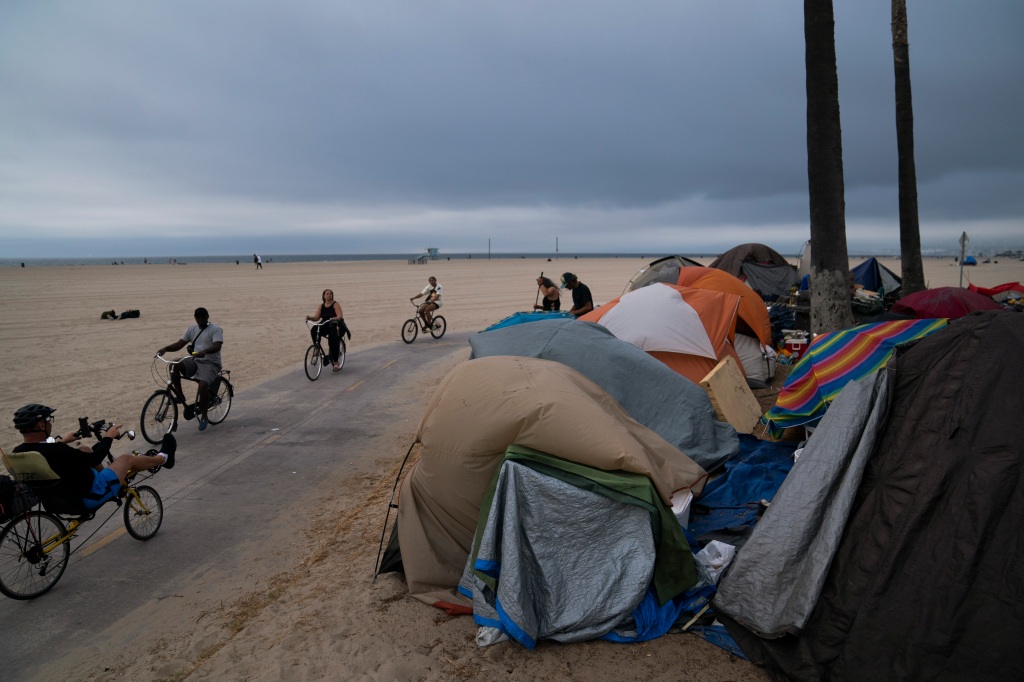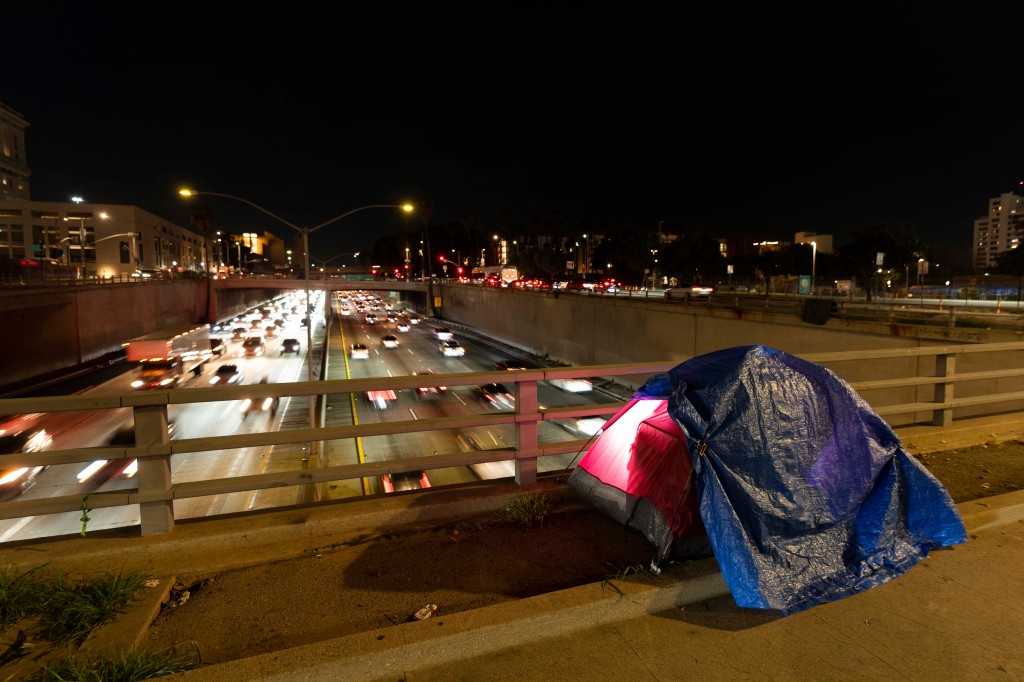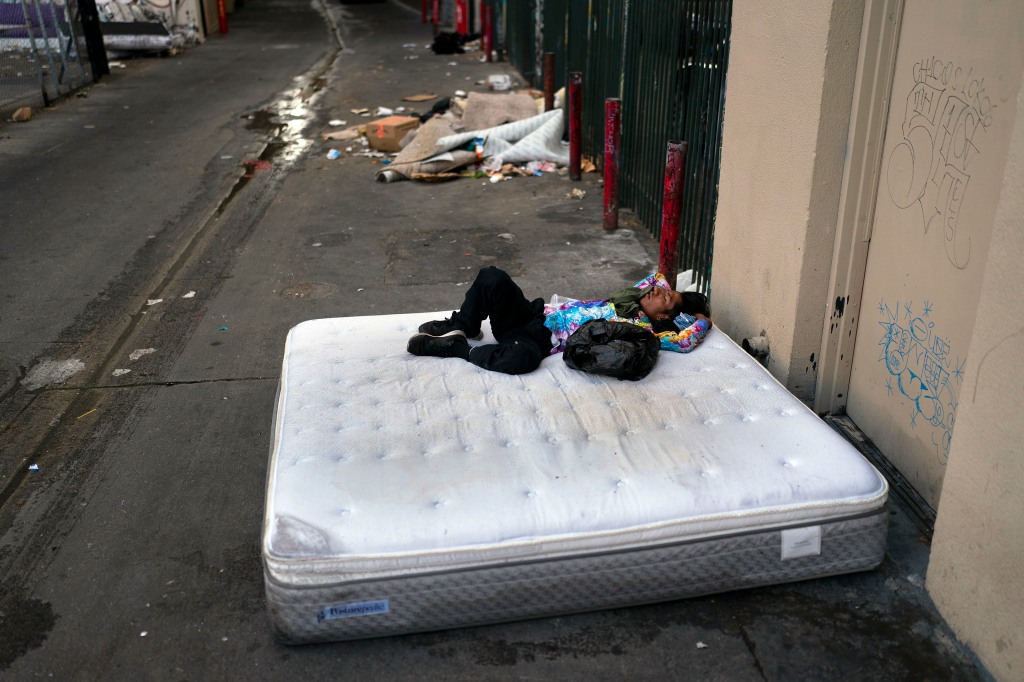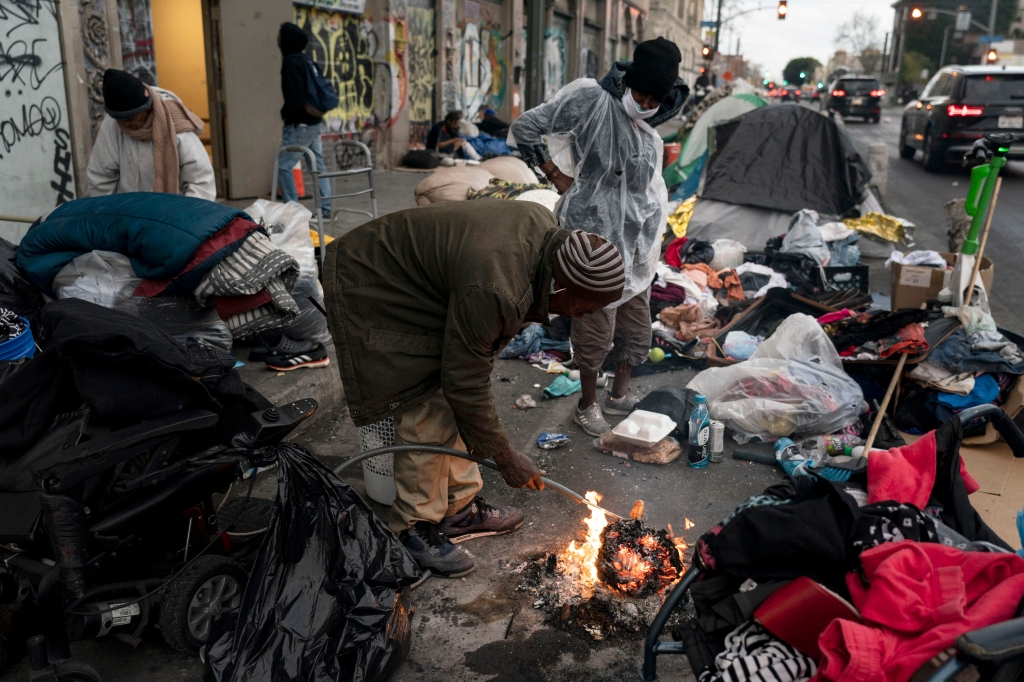Half of homeless Californians are over 50: report
Almost half of homeless Californians are over 50 and lost their homes because they didn’t earn enough money to keep up with bills, the largest report on homelessness in the state for 30 years concludes.
The report published Tuesday by the University of California, San Francisco showed 47% of single adults living homeless in the state are over the age of 50, with black and Native Americans “dramatically overrepresented” in the group.
California has about 171,000 homeless residents, representing around 30% of the country’s entire homeless population. Over 3,200 people took part in the survey.
Those who participated reported a median household income of $960 a month six months prior to finding themselves on the streets. Many said rental subsidies would’ve prevented them from being evicted and helped them stay on track.
Rates vary depending on where people are across the state, but property company Zillow calculated apartment rent costs in California are the highest in the whole US with a median monthly rate of $2,542.
“The results of the study confirm that far too many Californians experience homelessness because they cannot afford housing,” said Dr. Margot Kushel, director of the Benioff Homelessness and HousingInitiative at UCSF, which released the report.
Kushel said the survey also dispel “myths” that many people living on the streets come from other states, as most people surveyed stayed in the same county where their houses were.
Janis Wilds, a longtime San Diego resident who volunteers for a non-profit called Housing for the Homeless, told The Post that the predominant number of unhoused she has helped are seniors who have various medical conditions.
Wilds was among the group of community activists who did not support San Diego City Council’s decision to pass an “unsafe-camping” ordinance last week. Under the new rule, which is expected to go into effect by the end of July, homeless encampments are no longer allowed around schools, city parks, riverbeds and transportation hubs in San Diego.


“Seniors are definitely the largest group of unhoused in San Diego County and most of them are physically disabled with nowhere to go,” Wilds said. “They stay in the Downtown area because that’s where they get most of the services, if they are even able to.
“They are down there with their walkers and wheelchairs and there is no available housing for them. They literally can’t move, so what do they do? They stay in the encampments, which is horrendous. It’s an every day humanitarian crisis happening right in front of us, but the reaction is to just bulldoze the belongings of people who are handicapped and mentally ill.”
According to the UCSF study, a fifth of those surveyed said they wanted substance abuse treatment but were not able to get it. Two-thirds said they suffered from mental health issues.

Los Angeles Mayor Karen Bass, who took over the position in December 2022, doubled down on her campaign promise when she vowed to end homelessness in the country’s second largest city by 2026.
In an interview with Jake Tapper over the weekend, Bass said, “My goal would be really to end street homelessness. There will still be people in shelters and interim housing, but to at least, not have people dying in our streets.”
Part of Bass’ plan includes cleaning up Downtown Los Angeles’s infamous Skid Row— four square miles with the densest concentration of homeless in the county with about 4,400 people living in squalor and open drug use.

Under the $60 million state grant recently awarded to the LA County Department of Health Services, more than half of Skid Row’s homeless population will move into housing over the next three years.
Nearby hotels and motels will be used for interim housing under this program, LA County officials said.
About 350 of the interim housing beds will include services for people with the most complicated mental health needs.
Rev. Andy Bales, CEO of Union Rescue Mission in Downtown LA, said the UCSF’s study paints a far too broad picture of homelessness. He said the study did not provide a comprehensive look at the epidemic of fentanyl and other drugs taking over the homeless population.
“They not only gloss over the reality of homelessness but they call it a ‘myth’ that can be solved with subsidized housing, and that’s not what’s really happening in the streets,” Bales told The Post.
“Many of the folks we come across have serious history of mental illness and drug abuse that you can’t just wipe clean by subsidizing for affordable housing.”
According to LA County Public Health, the death rate increased 55% among people who are homeless between 2019 and 2021.
Will Nicholas, director of the Center for Health Impact Evaluation at LA County Department of Public Health, said more than 2,200 unhoused people died in the county in 2021 — the first time it exceeded 2,000 cases since the county has kept track of numbers, he told the Los Angeles Times.
The leading cause of death among LA County’s homeless population is drug overdoses which appears to be tied to the explosion in use of the often fatal drug fentanyl, county officials said.
Bales said what is not a myth are the lack of services to address mental illness among the population. He said the reality is many would rather partake in “harm-reduction” where they are provided clean syringes to use drugs.
“The facts on the streets don’t lie, and while some want medical help, I almost can guarantee that this group would rather have the harm-reduction model and free-flow of alcohol and drugs,” Bales added.
“This is why you can’t just dismiss it as a ‘myth.’ That study can say whatever it wants, but the facts in the number of overdose deaths in LA and San Francisco don’t lie when it comes to the connection of drugs and mental health issues to homelessness.”
Read the full article Here


